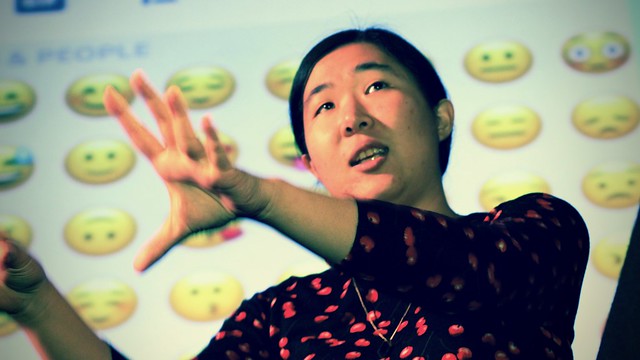Power of Emoji

Audio
DownloadVideo
Watch on YouTubeTalk description
From improving performance 📈 of mobile web in 1999 to reacting with 👍 and 🎉 on our Pull Request in 2016, Emoji has become part of our daily communication. Emoji is fun and ambiguous, let's look at how it became part of our daily communication & how we can invent new use as creators of the web! ❤️ 💯 💁
Session Summary
Mariko Kosaka delivers a lively talk on how emoji revolutionise digital communication, tracing their origins from seafaring signs to modern mobile culture. She vividly illustrates how these tiny images amplify emotion, shorten code, and bridge language gaps, turning PRs and chats into richer human exchange. With humour and clear examples, she shows emoji’s growing power to transform everyday text – making communication more visual, efficient, and expressive. It’s a fun yet insightful dive into why those colourful symbols matter now more than ever.
View detailed generated session topics, quotes and video timestamps
Emoji: The Language Beyond the Language
Introduction to the Speaker and Topic (0m00s)
Mariko Kosaka introduces herself as someone who flew in from New York and has a background in communications and visual anthropology. She explains her interest in emoji stems from her studies in communication and her experience entering web development during the rise of social networks in 2006-2008.
"I studied communications as a major at uni and visual anthropology as a minor, and so I was really interested in communications"
"emoji actually means: E which means picture in Japanese, and MOJI which means letters in Japanese. So it's basically picture letters"
The Japanese Origins of Emoji (6m00s)
Mariko traces the history of emoji back to 1997 Japan, where J-Phone released a touchscreen mobile phone supporting kanji characters. She explains how the inclusion of emoji was driven by market competition and customer demand.
"I was able to trace back pagers from that era supporting the heart mark emoji"
"people were turning away from certain cages of contracting with DoCoMo because one of those device didn't support heart mark to communicate on the pager"
Mr. Kurita and the Birth of Modern Emoji (13m00s)
The talk focuses on Shigetaka Kurita, who created the original 176 emoji set for NTT DoCoMo's i-mode platform in 1999. Mariko explains how Kurita drew inspiration from manga conventions, Tokyo Olympics pictograms, and weather symbols.
"Mr. Kurita was tasked to do a few of the technical specifications She was a young person on the team She was the one who knew how to use computer"
"I didn't include any emojis that involves the légion nationality race and gender to avoid future conflict"
"he drew the inspirations from is this pictograms from Tokyo Olympics in 64"
The Rise of i-mode and Mobile Internet (26m00s)
Mariko describes how i-mode pioneered mobile internet in Japan using HTML instead of WAP, making it truly "mobile first" and enabling emoji to become widespread in digital communication.
"i-mode supported HTML for content"
"it was truly mobile first... in Japan in 1999 that happened"
Unicode Standardisation (33m00s)
The presentation covers Google's 2008 proposal to add emoji to Unicode, explaining the complex process of international standardisation and the debates around which symbols to include.
"Google led this proposal to add emotion into Unicode it was official in 2008 but looks like they've been working on since late 2006 2007"
"the purpose for this adding is purposeful running these symbol is interoperability"
"they switched naming from flag symbol Japan or flag symbol us to emoji symbols"
Technical Implementation and Modern Usage (40m00s)
Mariko concludes with practical advice on implementing emoji in web projects, discussing various methods including treating emoji as images, using span tags with ARIA labels for accessibility, and the rise of emoji in modern communication.
"I recommend putting a span around it and then putting the Aria label so that it leads to the screen reader as you want it to"
"Apple is advocating that so now in the new iOS if I'm thinking then the speech bubble shows up"
About Mariko Kosaka
Mariko Kosaka spoke back when we didn't ask for bios, but do checkout their links.